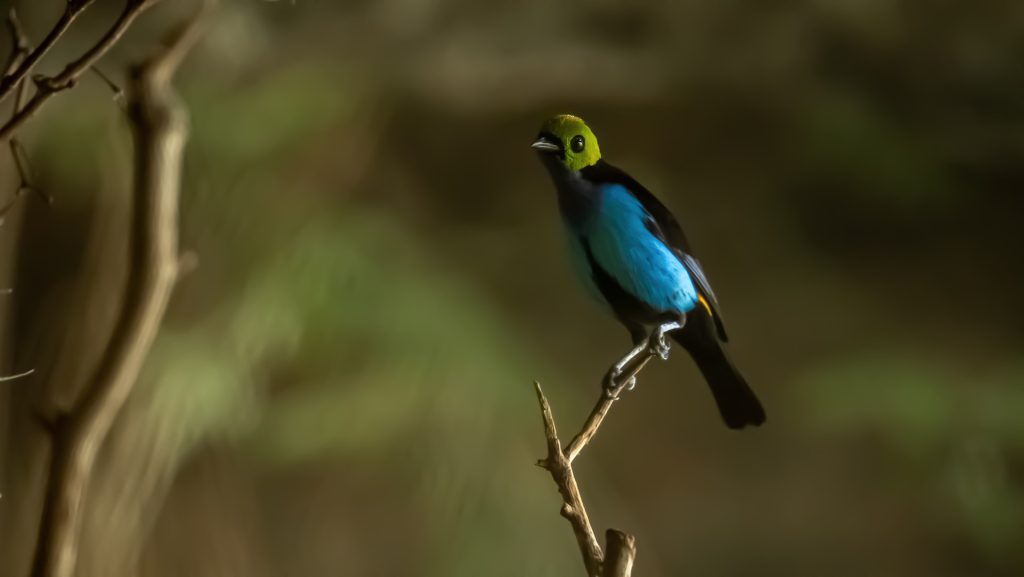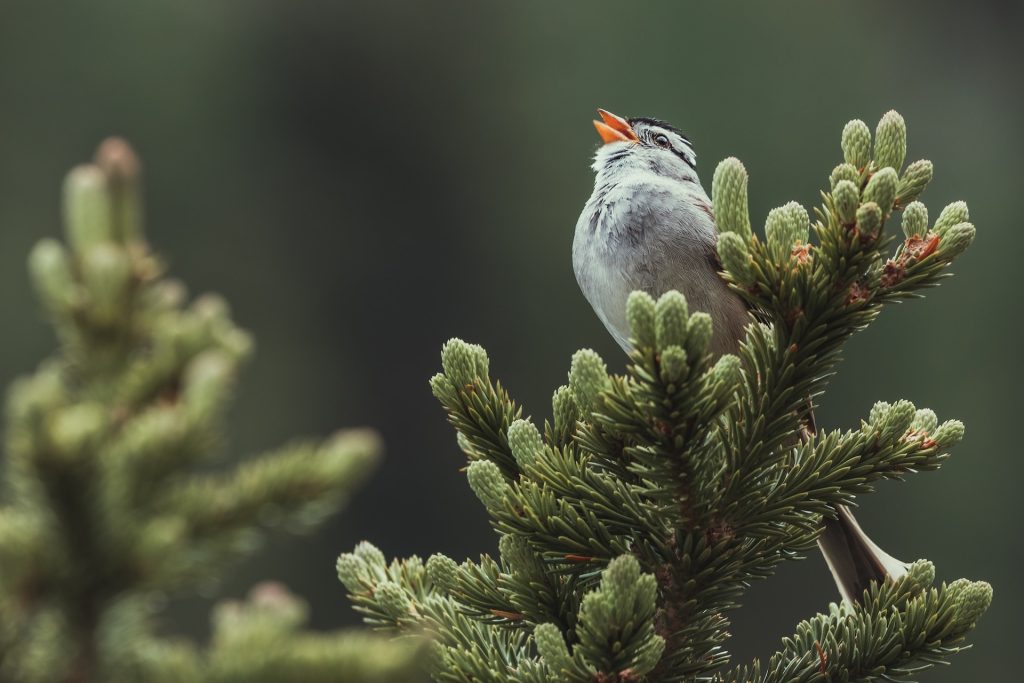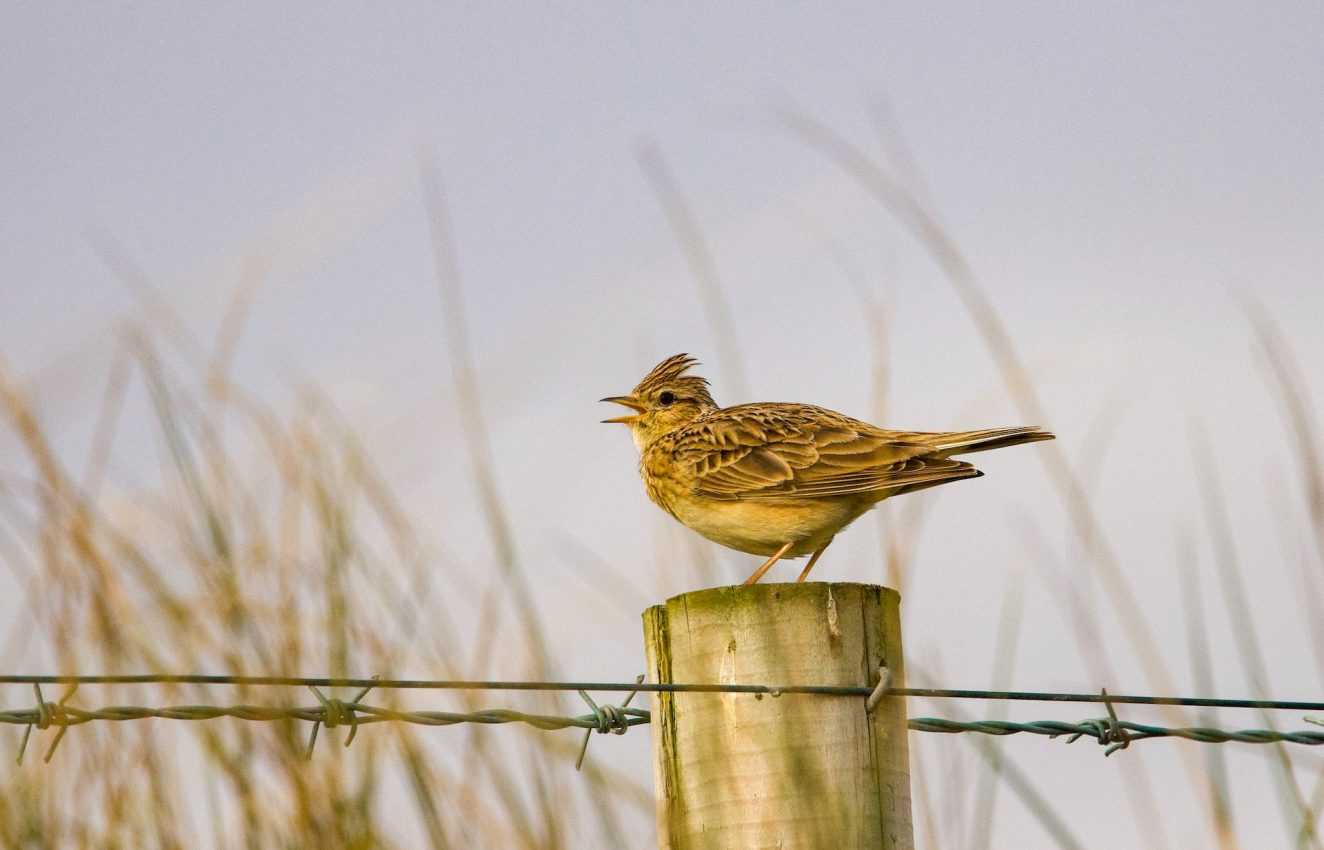Birds, the maestros of the avian world, are renowned for their melodious tunes that captivate our hearts. However, beyond the familiar melodies lie extraordinary and often overlooked sounds that add a touch of the surreal to the natural orchestra. In this exploration, we journey through seven of the most peculiar and wondrous bird sounds, each a testament to the diverse and fascinating world of avian vocalizations.

Club-winged Manakin
In the cloud forests of the Andes, the Club-winged Manakin unveils a musical marvel that defies convention. Using specialized club-shaped wing feathers, these birds vibrate their wings at an astounding 107 times per second, creating an electronic-like sound. The resulting three-syllable call, bic-bic-burrrr, resembles the melodic hum of a metal detector and serves as the Club-winged Manakin’s unique courtship song, enchanting potential mates.
While not currently considered threatened, these birds face a decline in population due to habitat destruction, emphasizing the importance of preserving their cloud forest homes.
White Bellbird
Venturing into the tropical realms of northeastern South America, the White Bellbird emerges as an auditory powerhouse. Producing the loudest avian sounds on Earth, the male White Bellbird’s call reaches an astonishing 125 decibels, akin to the intensity of a jackhammer. Despite its somewhat misleading name, this bird’s call travels vast distances, echoing through mature forests and serving as a powerful tool in courtship.
Although not under immediate threat, the White Bellbird faces challenges from habitat destruction, emphasizing the need for conservation efforts to ensure its continued existence.
Capuchinbird
A master of eerie and otherworldly vocalizations, the bald-headed Capuchinbird resides in the rainforests of northeastern South America. During the breeding season, the male Capuchinbird inflates air sacs around its neck, producing a haunting buzzing call reminiscent of a chainsaw or a cow’s moo. While not currently threatened, the Capuchinbird’s population decline reflects the ongoing destruction of its rainforest habitat.

Leach’s Storm-Petrel
Amid the vast expanses of the North Atlantic and Pacific Oceans, the Leach’s Storm-Petrel, typically silent and solitary, surprises with its vocal prowess. At coastal nesting burrows, these seabirds create purrs and chatter-like sounds, often perceived by human listeners as “cute” or “adorable.” Facing population decline due to nonnative predators on breeding islands, Leach’s Storm-Petrel is now classified as Vulnerable by the International Union for Conservation of Nature (IUCN).
Gunnison Sage-Grouse
In the sagebrush habitats of eastern Utah and western Colorado, the Gunnison Sage-Grouse engages in elaborate courtship displays characterized by unique sounds. Male grouses inflate air sacs, creating a swishing sound akin to rustling sheets, followed by a finale of rapid, bubble-like plop-ploop. With only 5,000 individuals remaining and protected by the Endangered Species Act, these birds confront the challenges of habitat loss.
Musician Wren
In the heart of the Amazon, the Musician Wren stands as an apex singer, drawing comparisons to classical composers like Bach and Haydn. The secret to its musical prowess lies in the use of consonant intervals, creating a melody that resonates with our ears. Regrettably, this enchanting bird faces the threat of hunting for its perceived good luck, leading to a decline in its populations.
American Bittern
Wandering across North America, the American Bittern introduces itself with a call earning it whimsical monikers like “thunder-pumper” and “bog bull.” Males gulp air to produce hypnotically weird drip-like sounds, forming the distinctive pump-er-lunk pattern. Despite its unique vocalizations, the American Bittern faces a 43-percent population decline over the last 50 years due to disappearing wetland habitats.

These seven strange and wonderful bird sounds showcase the incredible diversity of avian vocalizations. From the rhythmic club-winged melodies to the thunderous calls of the White Bellbird, each sound adds a unique note to the symphony of nature. As these birds face various threats, their extraordinary sounds serve as a reminder of the delicate balance within ecosystems and the importance of conservation efforts to preserve these enchanting melodies for generations to come.





